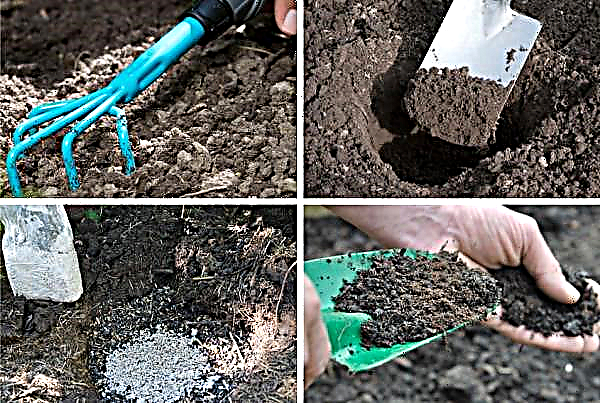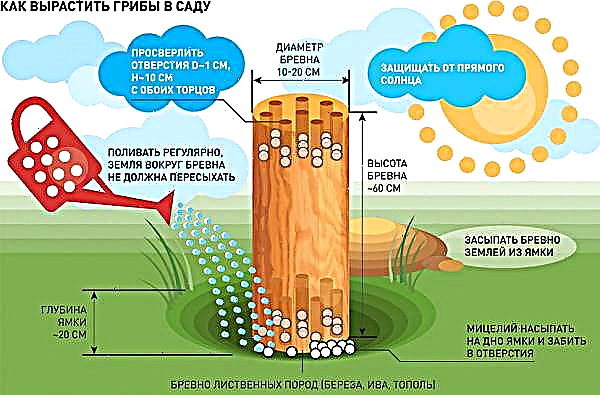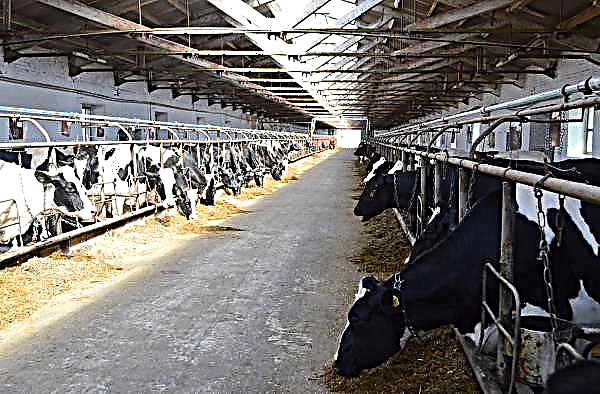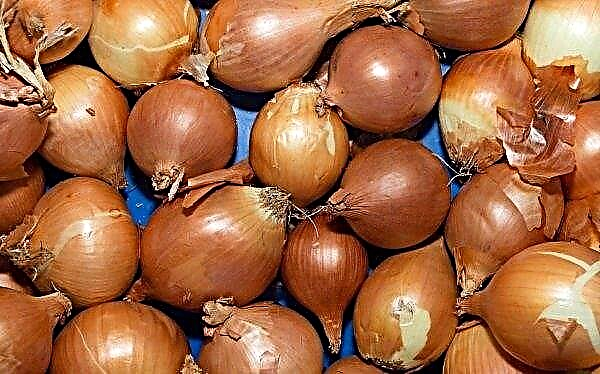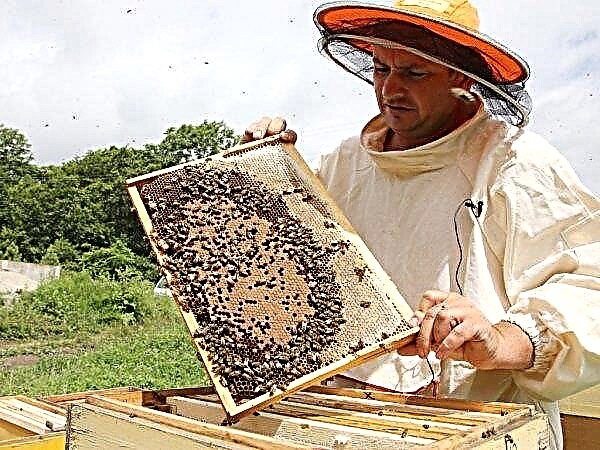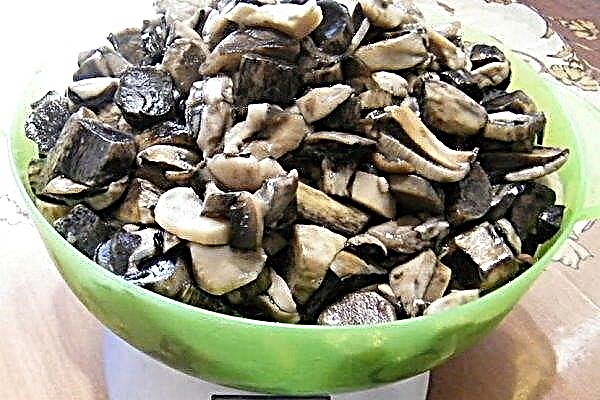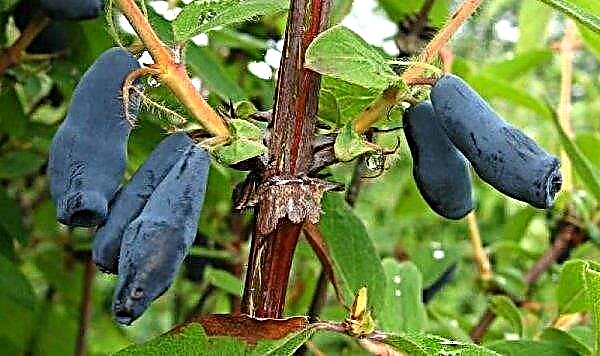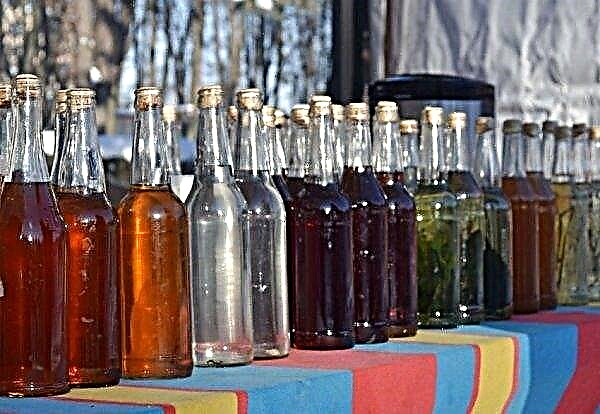Potatoes have long been the most popular vegetable in Russia and its neighboring countries, mainly due to their exceptional nutritional value and excellent taste, which also manifest themselves in very different ways depending on how the root vegetables are cooked.
However, residents of Siberia and other regions with short and rather cold summers traditionally face a big problem in choosing a variety suitable for cultivation in such adverse and harsh conditions. Fortunately, breeding science does not stand still and offers consumers more and more new opportunities, one of which is the domestic potato variety with the gentle name Hostess, which is the subject of this review.
History of cultivation of the variety and regions of its cultivation
The hostess appeared on the market recently. Work on the cultivation of this variety was begun by scientists of the Siberian Research Institute of Agriculture (Omsk) a little more than 15 years ago and was aimed at producing potatoes with high productivity, resistance to golden potato nematodes, medium ripening, good taste characteristics and good all this suitable for cultivation in Siberia.

In 2006, the new variety was transferred to the State variety tests, successfully passed them, after which in 2009 it was included in the State Register of Selection Achievements of the Russian Federation, and the Federal State Budget Scientific Institution “Omsk Agrarian Scientific Center” was named the originator.
- Initially, the Hostess was recommended for cultivation in the following regions of Russia:
- Omsk;
- Tyumen;
- Tomsk;
- Kemerovo;
- Novosibirsk;
- Irkutsk.
In addition, the variety is perfectly adapted to the climatic conditions of Yakutia, Buryatia, Krasnoyarsk Territory, Tuva, Khakassia, Altai and Transbaikalia. However, due to its unpretentiousness and excellent commercial qualities, for less than 10 years of its existence, the Hostess has earned well-deserved popularity among farmers and owners of personal household plots throughout almost the entire middle part of the European part of Russia and even in neighboring countries, primarily Belarus, Ukraine and Moldova.
Characterization and description of the variety
A complete characterization of any new variety is impossible without a description of both the external structure of the plant and its productive (commodity) indicators.
Description of the bush and root crops
The hostess forms a medium-sized erect bush, usually growing up to about 60 cm. The plant has good foliage, the leaves themselves have a dark green color and a wavy periphery characteristic of many varieties of potatoes. The Hostess blossoms very beautifully, covered with numerous flowers of red or purple hue.

With proper cultivation, each bush creates from 12 to 18 fairly large root crops weighing 100-180 g (sometimes up to 200 g) each. The distinctive features of the tubers themselves are the regular round-oval shape, the pink color of the peel, a smooth structure with a small number of small eyes, the color of the pulp is yellowish-beige.
Taste qualities of the variety
The hostess belongs to table potato varieties with a rather high starch content. Moreover, varieties containing more than 18–20% of this carbohydrate are usually classified as technical, they are usually used for the production of alcohol and starch, while the hostesses of the Hostess are “borderline” - 17–22%.
Did you know? High-starchy potatoes are poorly suited for whole boiling, as there is little liquid in such root crops, so when it gets into the water, it “greedily” begins to absorb it, and then inevitably falls apart. Therefore, good housewives know that potatoes, in which there is a lot of starch, need to be fried, and varieties with a starch content of less than 15% should be cooked.
Nevertheless, Hostess tubers have an excellent taste, do not darken during the heat treatment and, taking into account the peculiarities of their chemical composition, are well suited for:
- frying (regular or deep-fried);
- pureeing (including dry puree);
- baking;
- preparation of thick soups (for example, cabbage soup, where well-boiled potatoes are needed, which provides the cream with the necessary cream texture).

Productivity and ripening dates
By maturity, the Hostess belongs to mid-season varieties. Depending on the growing region of the tubers, biological maturity reaches 80–100 days after planting. As for productivity, its indicators also vary greatly, and this depends not only on the cultivation zone, but also on compliance with agricultural technology.
According to the official data of the originator, during the variety testing, the Hostess showed receiving from 40.1 to 48.3 tons of tubers per hectare, while the results for farmers are not so uniform and range from very modest 600 kg per hectare to a record 60 tons .
Since it is difficult to believe that the minimum and maximum yields obtained by cultivating the same cultivar can differ by a factor of 100, it is nevertheless guided by the information provided by the creators of the Hostess.

Disease resistance
According to the results of state tests, confirmed by reviews of those who have practical experience in growing Hostess, the variety is distinguished by the following indicators of resistance to the main diseases of potatoes:
| To the Golden Potato Nematode | High (especially pathotype RoI) |
| To potato crab | High (including the most aggressive races) |
| To late blight | Field (manifested in vivo, in laboratory is not confirmed) |
| To late blight of tubers | Average |
| To viral diseases | High |
| To the scab | Average |
| Rhizoctonia | Average |
 In recent years, the golden cyst-forming potato nematode has been very active in Western Siberia and causes irreparable damage to potato fields, which is why varieties resistant to this pest are especially attractive for the region.
In recent years, the golden cyst-forming potato nematode has been very active in Western Siberia and causes irreparable damage to potato fields, which is why varieties resistant to this pest are especially attractive for the region.
Pros and possible disadvantages of the variety
- The undoubted advantages of the Hostess are:
- the ability to grow in the conditions of short summers and a minimum amount of heat, the ability to tolerate sudden changes in temperature, including daily allowance;
- unpretentiousness;
- drought tolerance;
- resistance to many diseases and pests, including the most dangerous for potatoes;
- high yields;
- good taste, lack of tendency to darken during cooking;
- suitability for long-term storage with minimal commodity losses;
- high transportability.
- If we talk about the shortcomings, then their list sometimes includes:
- very high starch content;
- loss of shape during cooking (lack of versatility in use);
- lack of resistance to scab, late blight and some other diseases;
- insufficient resistance to spring return frosts;
- susceptibility to cracking tubers;
- a high probability of fading of root crops in violation of agricultural production techniques, which, in turn, leads to a decrease in yield.
Agricultural technology planting potatoes
The hostess is suitable for growing in any way - both in the open ground and under the film. However, since the variety was conceived as highly resistant, suitable for cultivation in weather conditions close to extreme, it is most often grown on ordinary, unprotected beds, which requires much less cost from the gardener.

The best place to land
Landing of the Hostess is necessary in an open and well-lit place, where there is no swampiness or close lying to the surface of groundwater. The most successful option is the presence of a gentle slope to the south or south-west side, then from the north the bed will be reliably protected.
If there is no slope, instead of natural relief protection, tall plants, for example, dense shrubs or fruit trees, can be used.
Did you know? Folk omen allows you to determine the onset of potato planting by the appearance of small but fully opened leaves in the birch or, if bird cherry grows near the site, at the beginning of its flowering.
Landing time
Since the Hostess was initially focused on growing in Siberia, she was supposed to be planted at the very end of spring or even at the beginning of summer.
However, it would be more correct to focus on this issue not on the calendar, but on the degree of heating of air and soil: the average daily temperature should be set at + 8 ... + 10 ° С, it is desirable to expect the same parameters from the soil at the depth of the tuber laying (10-15 cm).
 Planting dates can also be adjusted depending on the soil structure - the lighter it is, the faster it will warm up.
Planting dates can also be adjusted depending on the soil structure - the lighter it is, the faster it will warm up.
Preparation and soil requirements
For growing potatoes, fertile and not very heavy soil is best suited with good moisture and air permeability (ideally, dried peat or chernozem) and a neutral reaction - the pH level is in the range of 5.1–6.

If the soil is too light, it will quickly dry out, at the same time losing minerals due to leaching, and heavy soil is dangerous due to stagnation of water in the roots, which is absolutely unacceptable for root crops.
Nevertheless, with the correct preparation of the soil, which is best carried out in the fall, the situation can be corrected:
- for sandstones or sandstones - the introduction of compost or manure in an amount of from 1.5 to 3 kg per 1 square. m for deep digging;
- for alumina or loam - the introduction of peat, sand or sawdust in an amount of from 2 to 20 kg per 1 square. m (depending on soil composition).
Crop rotation
Crop rotation refers to a certain sequence of growing different crops at the same place, suggesting their ability to have different effects on each other. In particular, if plants have common pests or need the same nutrients that they actively extract from the soil, planting such crops one after the other will lead to significant crop losses.
Conversely, some plants release certain substances into the soil that other crops especially need, in which case planting the second after the first will ensure maximum productivity even without the use of additional fertilizers.
As for the potato (regardless of variety), its possible predecessors, according to the rules of crop rotation, can be given the following assessment:
| Good predecessors | Bad predecessors | Neutral predecessors |
|
|
|
Sprouting planting stock
Landing of the Hostess is preferably carried out after preliminary germination. This procedure can last from 10 to 30 days. First of all, tubers should be carefully inspected, sorted, removing all copies damaged by diseases or rodents and calibrated to fit.

Sprouted tubers need to be tried not to damage, all others can be put in a well-lit place with air temperature + 20 ... + 25 ° С, covered with a damp cloth of light color. A faster germination of tubers will be helped by treatment (spraying) with growth stimulants, for example, Epin, Regoplant, Kornevin, Bioglobin or Poteytin.
By the way, these same preparations can be used to spray bushes before flowering, this will improve the quality of the crop and give the plant additional protection against late blight, as well as the Colorado potato beetle and other pests.
Important! It is best to plant the hostess whole, without dividing the tuber into parts, so medium potatoes should be selected for planting (small ones will yield a poor harvest, and using large ones is not economically feasible).
Landing technology
In terms of planting technology, the Hostess differs little from any other potato variety. The depth of the laying of tubers should be from 10 to 15 cm, the traditional layout of the bushes is 35x60 cm. Planting work begins with the marking of the plot - the future rows are indicated with pegs, then the tuber laying site is marked within each row. Then, according to the scheme, they dig holes of the required depth, add 2-3 tbsp to each for disinfection and potassium top dressing. l wood ash, lay a tuber and fill the pit with earth.
Then, according to the scheme, they dig holes of the required depth, add 2-3 tbsp to each for disinfection and potassium top dressing. l wood ash, lay a tuber and fill the pit with earth.
However, there are unusual ways of planting potatoes that can significantly facilitate the work of the gardener or get high yields in conditions that were initially poorly suitable for growing this crop.
In particular, they include:
- Comb method, involving the excavation of trenches on a bed with the placement of excavated land parallel to such a trench in the form of a kind of ridge. Pits for laying tubers are dug exactly in the ridge, raised about 15 cm above the ground, which helps protect root crops from high groundwater and facilitate air circulation in too heavy soils.

- Trench methodconsisting in the fact that the laying of tubers is carried out not in separately dug holes, but in trenches with their subsequent termination using a walk-behind tractor. It is used on large areas using special equipment.

- Under the straw - in this case, the tubers are simply laid on the ground and covered with straw, and as the bush grows, the straw layer is constantly updated. Allows you to get rid of the need to dig land both before planting and during harvesting.

- Under the black film. The method is quite time-consuming, but it allows you to completely solve the issue of subsequent soil care. The place of the future bed should be covered with dark agrotechnical fiber, then make cross-shaped cuts in it according to the usual planting scheme, dig a hole inside the cuts, place a tuber in it and bury it.
 Weeds do not germinate through such a fabric, and the covering material, perfectly letting in irrigation water, does not allow it to evaporate quickly, forming a dense crust, which must be constantly loosened.
Weeds do not germinate through such a fabric, and the covering material, perfectly letting in irrigation water, does not allow it to evaporate quickly, forming a dense crust, which must be constantly loosened.
Care Features
Caring for the Hostess does not present any special difficulties and includes carrying out activities such as weeding, hilling, watering, top dressing, and also, if necessary, treatment for diseases and pests.
Weed control
If the Hostess planted using the traditional method, without using black agrotechnical fiber covering the bed, in order to get a good harvest throughout the growing season, the gardener must regularly remove all weeds growing on the plot, and also loosen the soil after each watering. This problem can be solved by mulching, for which you can use straw, sawdust, peat or other organic materials.
Another specific technique for growing potatoes is hilling. Raking a large amount of land under the bush in the form of a high hill, up to 5 cm, allows for more intensive growth of the root system, and this, in turn, leads to the formation of a larger number of tubers and prevents their fading.

Watering and fertilizer
The hostess is characterized by high drought tolerance, and therefore does not need regular watering. It is only necessary to moisten the soil when, at intensely high air temperatures, the amount of precipitation is minimal. The fact that potatoes need watering can be guessed from the change in leaf turgor (due to lack of moisture, they become soft and drooping).
Did you know? The incredible French people instilled a love of potatoes with the famous agronomist of the eighteenth century Antoine-Auguste Parmantier. It was enough for him to just put up a guard armed to the teeth around the garden with an unknown culture, and at night “lightly” remove it - and the locals immediately took the opportunity to steal and try the strange vegetable that they had carefully guarded.
During irrigation, it is necessary to use water well warmed up in the sun and calculate its volume so that not only the soil surface is moistened, but also its deeper layers (water should reach a depth of about 50 cm, this will completely provide moisture to the root system of the bush).

During the growing season, it’s enough to feed the Hostess twice, and both times - before flowering (this guarantees the absence of nitrates hazardous to health in root crops).
The first top dressing can be carried out with organic matter, for example, chicken droppings, compost or mullein mixed with garden soil. In the same mixture, you can add a little wood ash, this feeds the bush with potassium. The second top dressing may consist of a complex of mineral fertilizers.
So, for 1 square. m beds are permissible to use:
- nitrofosco - 1 tbsp. l .;
- superphosphate - 2 tbsp. l
The preparations are mixed with water (approximately 5 l) and applied under the bush using the usual watering method.
Important! Before applying fertilizers, regardless of their composition, the bed must be abundantly watered, otherwise nutrients will be poorly absorbed, and if applied in liquid form, they may even burn the root system.
Pest and Disease Control
Diseases for which the Hostess shows minimal resistance begin to manifest themselves at very high temperatures, which is why the variety is focused on growing in regions with cold summers.
If this rule is not met, for preventive purposes it is recommended to treat the bed with fungicidal preparations containing copper (copper sulfate, copper sulfate, Bordeaux liquid) or manganese sulfate.
As for pests, the Hostess, like other varieties of potatoes, can become the target of attack by the Colorado potato beetle, wireworm, bear, caterpillar scoop, potato moth, potato flea, cicadas and other parasites.

To combat them, insecticidal preparations are used, however, when choosing a particular agent, it is important to take into account the characteristics of the pest, in particular, where it lives - in the soil or on the surface of the earth.
So, from the Colorado potato beetle and other “above-ground” parasites, you can use:
- "Anti-Colorado";
- "Calypso";
- Confidor
- "Bombardier";
- Hunter
- "Connect";
- Stop Beetle, etc.
It is better to fight with a bear, wireworm and other soil pests with the help of:
- "Thunderbolt";
- “Medvetoksa U”;
- "Bazudina";
- "Antichrob"
- "Anti-Medvedka";
- "Scorpio";
- "Antichrush" and others.
Harvest recommendations
Like other varieties of potatoes of medium and late ripening, the Hostess can maintain her qualities for a long time, but for this, the crop must be collected on time and properly prepared for storage.
Important! Tubers for long storage must be removed from the earth after they have reached full biological maturity. For the Hostess, this period begins approximately 80-100 days after planting, and the colder the climate in which the crop was grown, the closer this period to the upper limit.
However, it is also not necessary to overexert the root crops in the earth: as soon as the tops are dried, you can start collecting. Despite the fact that the Hostess tubers have fairly good resistance to various diseases manifested during long-term storage, and losses during this period usually do not exceed 5%, so that these indicators work properly, It is necessary to be guided by such fundamental rules:
- Do not dig potatoes in the rain or immediately after it. It is advisable that the land during the harvest period be dry.
- The root crops extracted from the soil should first be inspected and divided into two groups: those that are intended for immediate consumption, and those that can be used as stocks for the winter. The second group includes only flawless (whole and absolutely healthy) tubers of regular shape and medium size.
- Before laying in the cellar, potatoes must be dried in a dark, dry and well-ventilated place for 1.5–2 weeks, and some gardeners recommend washing tubers in advance to remove potentially dangerous microflora from their surface.
- While the tubers are drying, you should prepare the cellar. From the premises it is necessary to remove all the remnants of the previous crop, dirty equipment and other garbage, and then treat with lime or Bordeaux liquid.
- The dried crop should be inspected again, if necessary, iterated over and only then placed in the cellar.

In order for the tubers to remain in place for 8–9 months (these storage periods are typical for the Hostess), they need to create the following conditions:
| Temperature indicators | + 5 ... + 7 ° С |
| Air humidity | 70–80% |
| Ventilation | Good |
| Lighting | Minimum (darkness) |
Some farmers store potatoes at lower temperatures, making sure that the thermometer’s mark does not drop below zero, but under such conditions the risk is that the tubers will begin to darken.
In addition, in order not to lose the crop ahead of time, it is periodically necessary to inspect and sort out it: if some specimens are wrinkled, darkened or, all the more, moldy or have any other signs of spoilage, even at an early stage, they should be immediately remove, otherwise the infection will spread very quickly to neighboring root crops.
Did you know? Everyone knows that digging potatoes is a time-consuming process, and yet the specific numbers voiced by scientists are impressive: it turns out that the harvest of root crops from a garden of 100 square meters. m, only if you calculate the mass of the earth raised on a shovel, is associated with the lifting of about 10 tons of total weight.
The hostess is young, but, as you can safely say, a very successful potato variety, ideal for growing in Siberia and other territories with cold climatic conditions. Such potatoes are also quite suitable for cultivation in the south, and in this case, a full crop can be harvested 2-3 weeks earlier.
In addition to unpretentiousness, excellent productivity, as well as high resistance to drought, diseases and other negative phenomena, this variety is distinguished by excellent taste characteristics, which fully justifies its name.




 Weeds do not germinate through such a fabric, and the covering material, perfectly letting in irrigation water, does not allow it to evaporate quickly, forming a dense crust, which must be constantly loosened.
Weeds do not germinate through such a fabric, and the covering material, perfectly letting in irrigation water, does not allow it to evaporate quickly, forming a dense crust, which must be constantly loosened.
